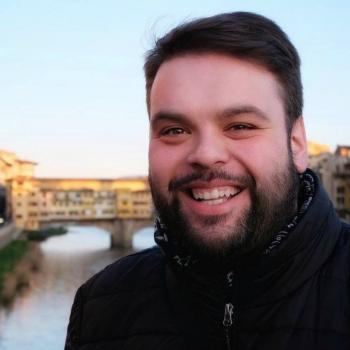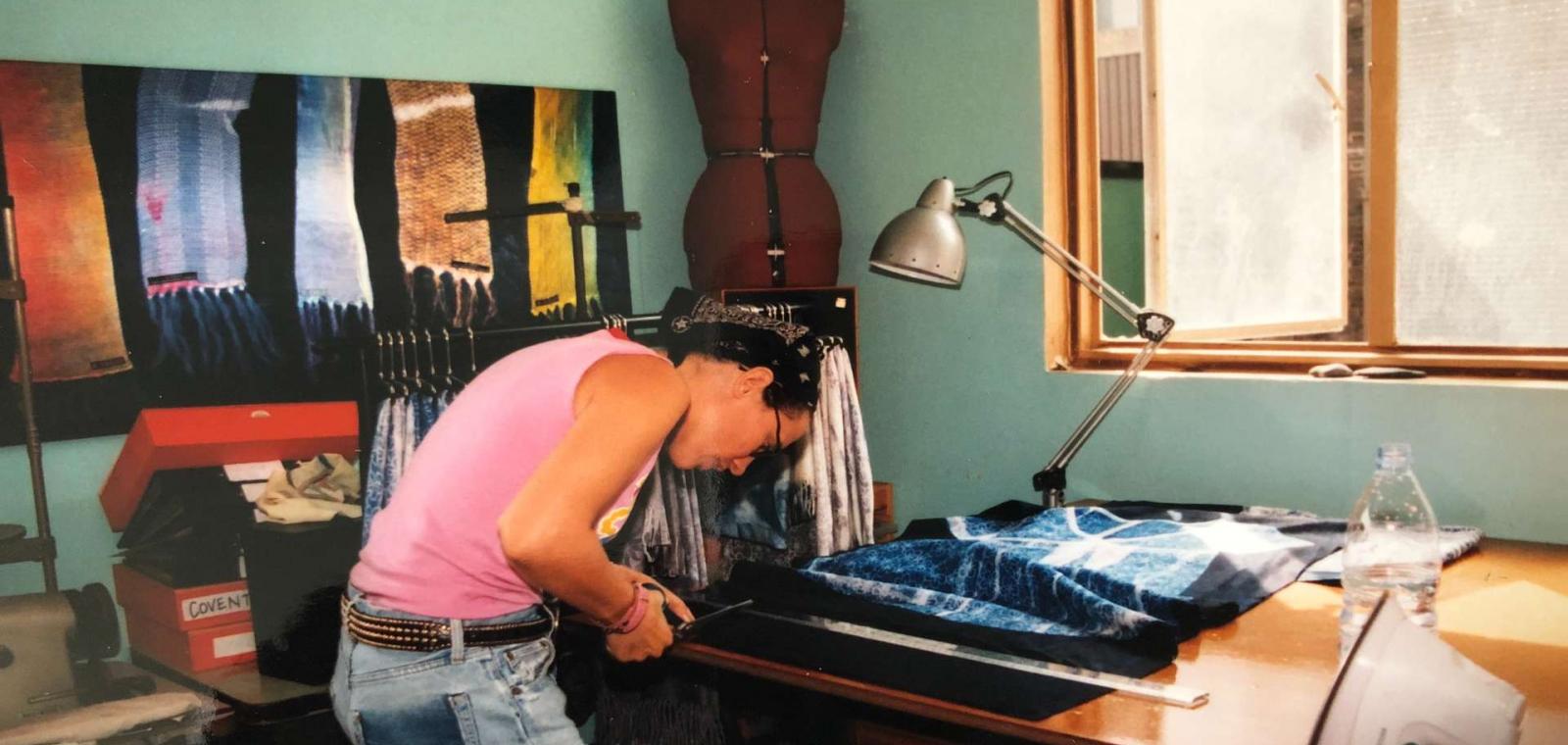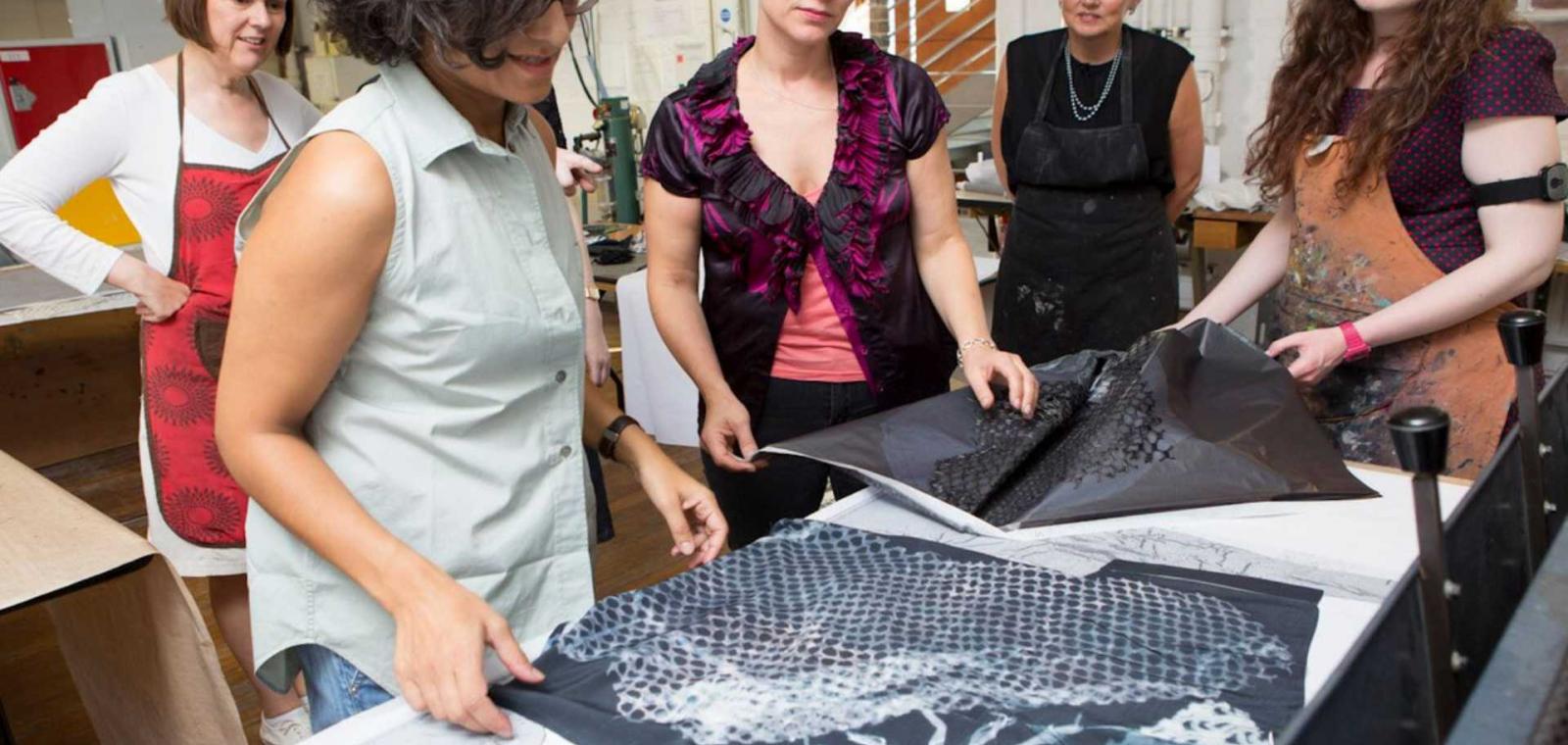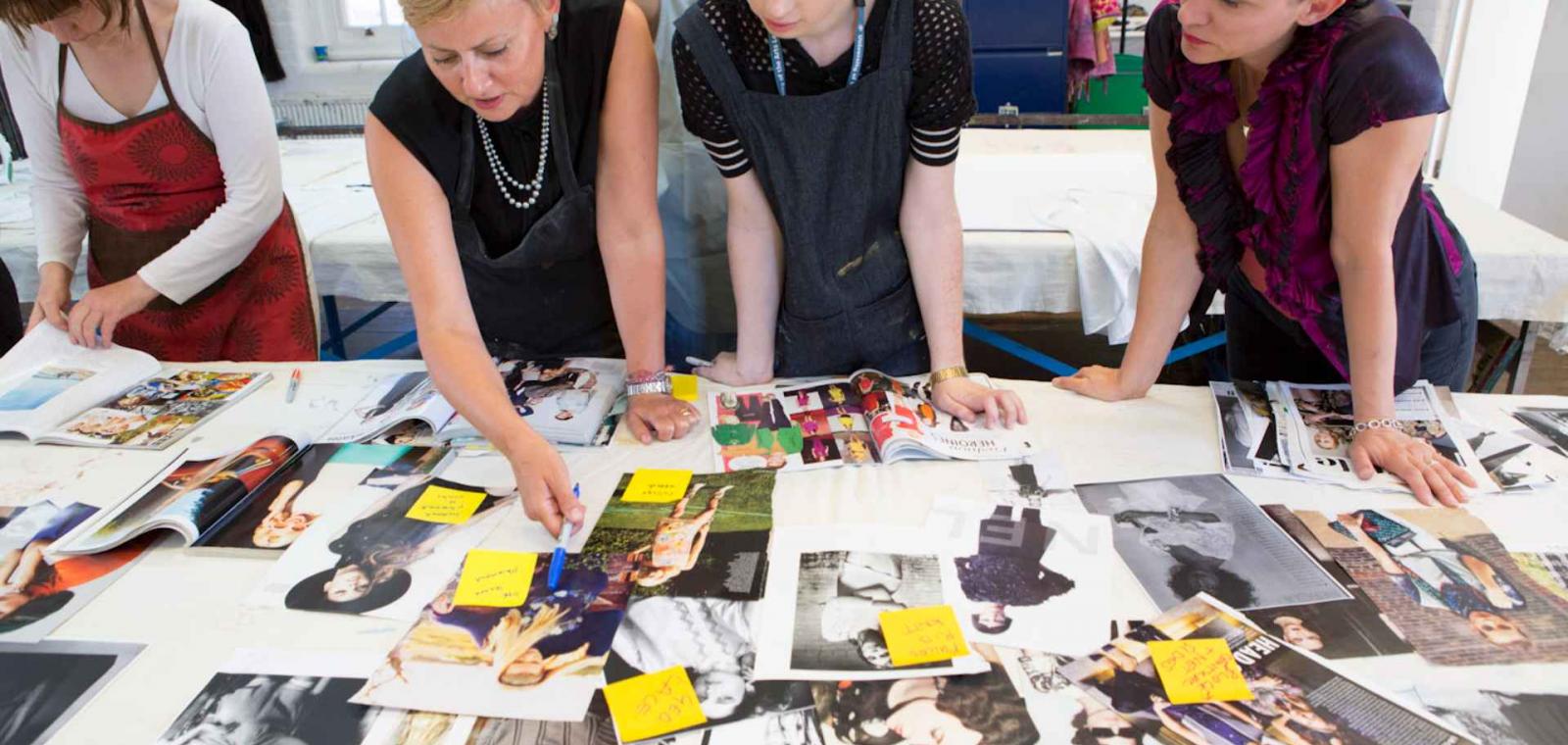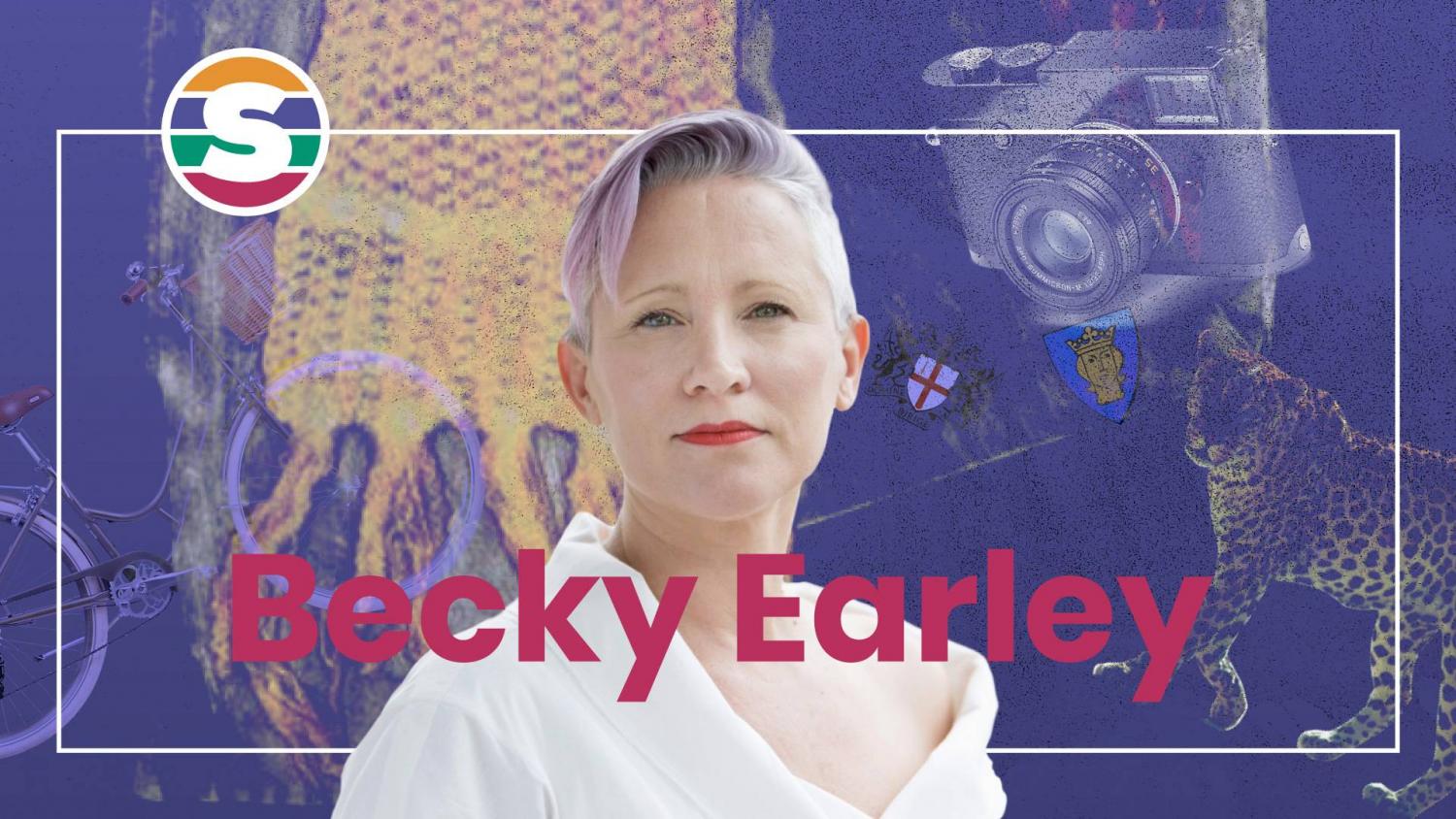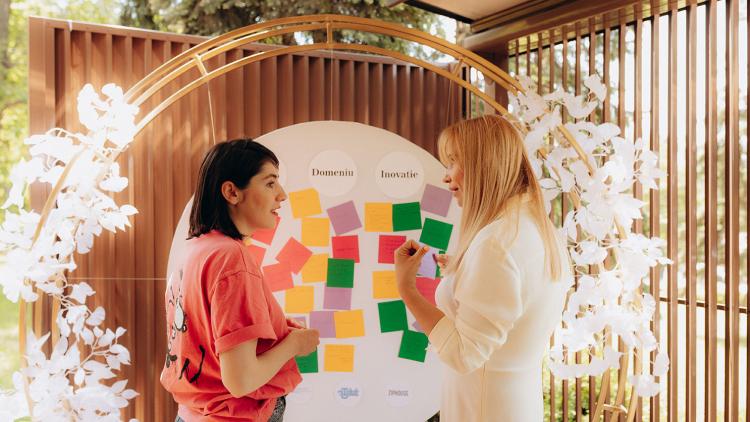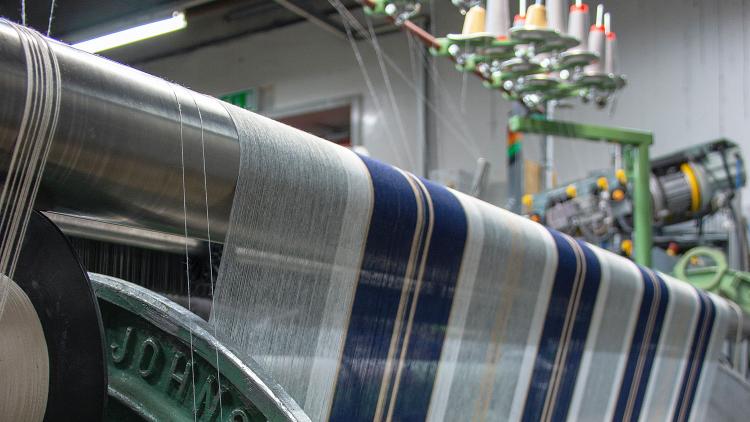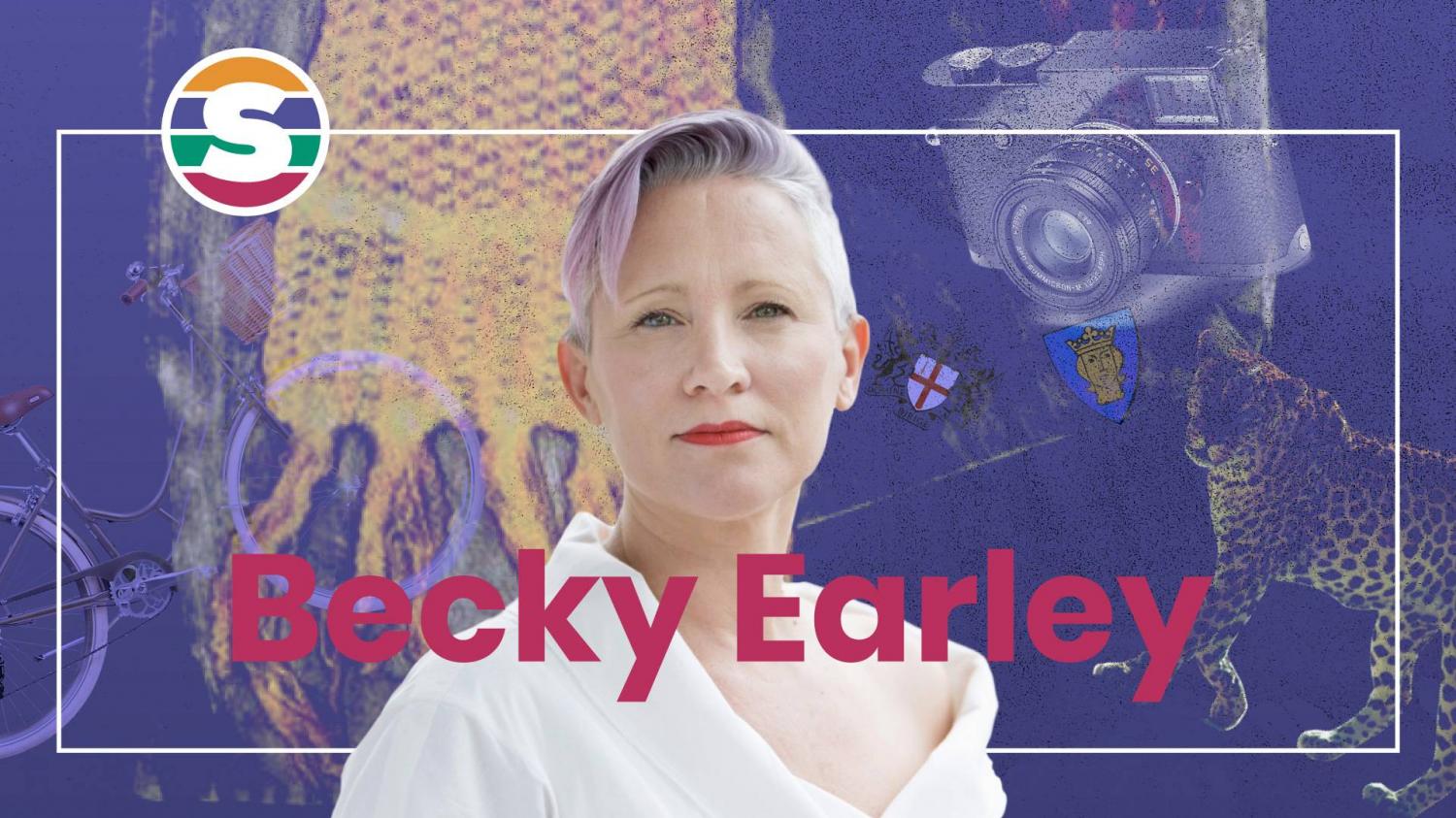
Becky Earley, design researcher and Co-Director of the Centre for Circular Design at University of the Arts London, kick-offs the #shemakesVoices series with a long interview about researching, innovation and sustainability.
Shemakes voices is the digital interview series that celebrates women innovators in the textile and clothing industry. Each month a partner of the shemakes consortium will dialogue with one of our advisors: a diverse group of women who have succeeded in building movements or services, or exploring innovations and technologies in the textile industry.
We kicked off the series with Becky Earley, a design researcher and Co-Director of the Centre for Circular Design at University of the Arts London. From her early days at Central Saint Martins in London to the World Circular Textiles Day 2050, textile design, research and innovation have always been part of her life.
Alexandra Korey: Becky, what is the absolute coolest thing you’ve had the chance to work on?
Becky Earley: Oh, it’s a tough call! I would say early on when I was producing my recycled shirts and showing them in different pop-up exhibitions, I just felt that there was something more that could have been done. One thing led to another and I was approached to curate an exhibition at the Crafts Council in London. It was called “Well Fashioned” and showed 21 U.K. designers at that time all working with sustainable fashion. It was really exciting to showcase their work, elevate it and say to the textile industry and all the visitors “Look, there is another way!”
AK: What was the ambience like back when you studied textile print design at the Central Saint Martins in the early 90s?
BE: Oh, it was amazing! I come from a little Wiltshire village and I got my degree up in Loughborough in the Midlands, but it was when I arrived in London in ‘92 that it really felt like “Yes, this is fashion and I am at heart of it!” - and I really was in the centre since the back door of St. Martins’s copy room literally opened straight out into Soho. It was a really interesting time. It was as much the things I did outside of college as the things I did inside that shaped my work and my direction. I was fascinated by artists at that time as much as fashion designers and my fashion textiles were very influenced by that vibrant culture.
AK: That’s exactly something I wanted to ask you about - since shemakes provides educational modules for anyone who wants to experiment or learn more about textiles, how important was this phase of formal studies to your career development compared to things outside of formal education?
BE: You need the whole portfolio of options and influences. I would absolutely encourage people to make sure they have been taught the core skills. I honestly think that without that I wouldn’t have had the tools and the frameworks to then go off and innovate. It’s ok to have ideas and skills but then you need to act on them and you can make it only if you have people to help you and pull things together. Create your community, open conversations and that’s when really amazing things happen.
AK: You had early success with your “exhaust print” items - shirts, scarves and the like that are actually collected in the Victoria & Albert Museum, a huge recognition that what you were doing was absolutely innovative. Tell us about the process that led to this innovation.
BE: I was making textiles by hand-painting papers and then printing them on textiles and garments. And because I put so much time and effort into the painting of these papers, I just wanted to use them again! So I tried on a different object and I got a really cool effect and I kept going until the paper was exhausted. I created a series of things that faded and changed over the sequence: same style, but each different from the other. I started showing them to my friends, my colleagues and they told me “That’s really cool! And, you know, you’re not using any more ink which means it’s better for the planet!”. So, it kind of came about serendipitously.
AK: How do you incorporate this concept of “everything is different” aesthetic into what the market wants and how do you convince the market that “the same is lame”?
BE: I started in the pre-digital printing era, so I think I managed to convince the buyers because my products were all done by hand and I was never really doing pretty florals, but almost a punk, rebel imagery and there was nothing out there like this, at all! What I really find interesting about circular fashion is that if we’re going to be having our hands on these products and remaking them, it's a brilliant opportunity to bring in women who love to make and build communities of makers that use craft skills differently so we can give to consumers something that they haven't seen before. It's about using that design and creativity to open our eyes to new possibilities. At the same time we have to tell the stories. The other reason that buyers probably did go for my products, was because I told them a really good story. I mean, I’d be pitching, I’d be selling my collection because storytelling goes hand in hand with the product.
AK: Specific to your work in fabric dyeing and printing, what do you see as the greatest problems and most interesting solutions today?
BE: I have been exploring the challenges around making a print design which can change over time in order to make the product last a long time. It would be great if the surface pattern could change so you could cover up stains or just reprint it if you’re getting bored of the look. My challenge is how to make the first print ready to accept the second, third prints with the fourth being a solid black. Then I also worked with the idea of this printed garment being turned into another kind of garment, like a jacket or a piece of jewelry. We are working to prototype a really extended lifecycle. We need to design for a long future, not just to respond to a trend.
AK: You’ve gone from designer and serial producer to professor and research center leader. How do you ensure freshness and creativity in everything you do?
BE: Oh, it’s an endless battle! I try to approach everything as an innovative thinker. With the climate crisis that we’re experiencing, we’ve got to really try to do a lot of things differently. I don’t think I am necessarily successful at balancing and I don’t know anybody who really is because, if you’re involved in sustainability, you just really want things to change and you work really hard. I am surrounded by so many passionate people who just work really hard to see change.
Prior to the digital interview we asked Becky to respond to questions to get to know her better. The result is the image featured above that reflects Becky’s work, ideas and outlook on life.
If you were an animal what would you be, and why?
A leopard, because they have the best coats.
What city do you identify with and why?
Stockholm. Although I am a Londoner and am awed by its size and diversity, Stockholm brings me inner peace in a way a city rarely ever does.
If you were to leave your favorite object to the next generation, what would it be and why?
It would have to be my new bike, with a panier packed with a wild swimming kit. Cycling is the only way to travel in a city - and the next generation can avoid some of the mistakes of my generation. I also think we too often forget to go outside and be adventurous these days…
What impact do you hope your work will have on the future of the sustainable fashion industry (or beyond!)?
I hope my work with textile design education will make a difference to future generations. I can see the ripple effects already in terms of my graduates who enter the industry with a load of new questions and demands

